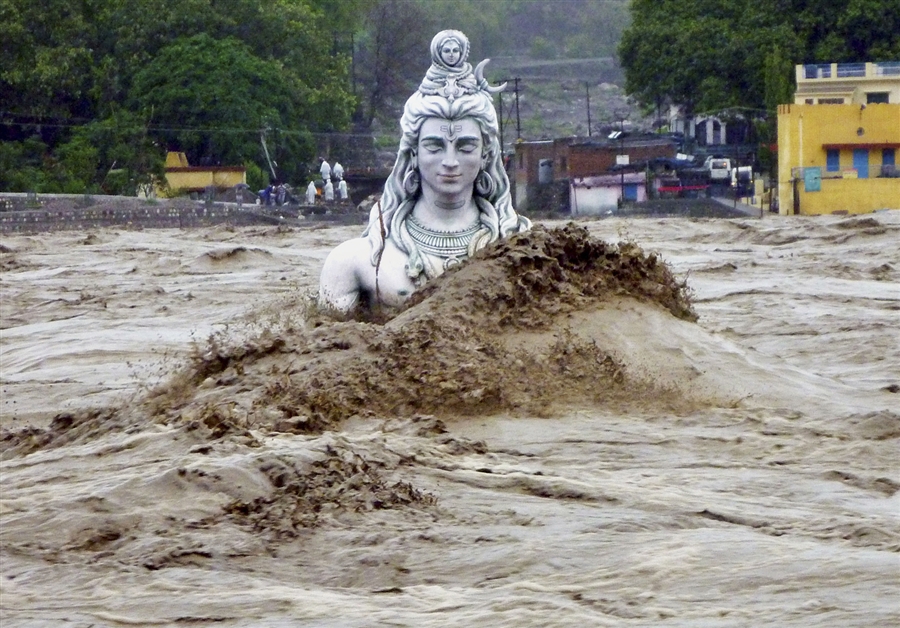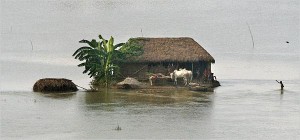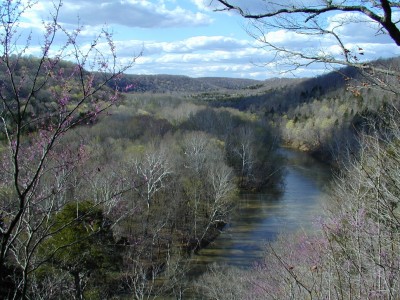Anchorage is Alaska’s largest city, with 300,000 residents spread out over an area about the size of Delaware. Part of Dena’ina Elnena (Dena’ina Country), home to members of the Eklutna and Knik tribes and many nationalities, it is a place with deep indigenous roots and a complex cultural and political history. Nestled between the Cook Inlet and the Chugach mountains, Anchorage has long stood as the economic hub of the state and the gateway to the Arctic.
Unfortunately, Anchorage also stands at the front lines of climate change. Alaska’s climate is changing twice as fast as the rest of the U.S., with more frequent rain and snow events, more insect infestations, receding glaciers and a longer wildfire season. Eager to tackle these problems head-on, city administration and residents are working with scientific partners to establish a baseline emissions inventory and create a framework for reducing emissions as part of a wide-reaching Climate Action Plan.
We met with the project’s Community Lead, Shaina Kilcoyne, the Energy and Sustainability Manager for the Municipality of Anchorage, to learn more about the challenges and opportunities Anchorage is facing.
How would you describe your community to someone who’s never been there?
There’s a lot to say about Anchorage. We’re pretty unique. This is where native people have thrived and survived for thousands of years. We’re an outdoor community, and we prioritize parks, trails and greenspaces. There is a lot of natural beauty, and I hope you have the chance to visit someday.
What do you see as the unique strengths of your community?
There are so many unique things about Anchorage and Alaska that I could probably go on all day! Anchorage residents are a resilient people—we take pride in doing things ourselves and helping our neighbors. I think it’s unique that we’re as far north as Oslo, Stockholm and Helsinki, some of the biggest leaders in climate action. That means even a northern city like Anchorage has the opportunity to be a climate leader in the United States and in the world.
What do you see as its unique challenges or struggles?
Something that pervades our everyday life is that we’ve been overly dependent on oil and gas extraction, and it makes it really hard for people to think beyond those sources of revenue and economic development. That revenue has helped build a lot of our infrastructure, but it’s also made it very difficult to diversify [our energy sources]. A lot of people are directly dependent on the oil and gas sector and see discussions of climate change as a threat to that. I get that, but I think that we’ve had these blinders on for too long. Our state has really buried its head in the sand and frankly we can’t afford to push it off any longer.
What do you think people would be surprised to learn about your community?
So many things! There are more than 100 native Alaskan and international languages spoken in Anchorage—our diversity is really cool. When we were creating our Climate Action Plan, we really tried to engage every community and collect their input. It was really important to us because we know that it is these underrepresented populations that see the biggest impacts from climate change. It’s important that we don’t assume that we know what is best for all of our populations.
In fact, we are creating a Climate Equity Council that can help throughout Climate Action Plan implementation, to give input from different communities on what the priority is, what would be most helpful, where do we start, and what are we missing? It’s gone a little slower than I hoped, but it’s not easy and we’re trying to do it the right way.
What would you advise to others trying to tackle a community issue?
What I would say is don’t be afraid to engage your community. When we started doing outreach, I was very concerned that people were going to yell at me, and that was not the case. More and more, the business community and conservative districts weren’t pushing back like I expected. It turns out your average person is living the effects of climate change, so they aren’t surprised, even if they are wary of what actions you propose. I’m not excited that we are experiencing climate change, but we absolutely are, and because it’s so pronounced here it’s hard to deny that. The conversation has been more at the forefront. The action has been slow to follow, but I do think that will come.
What do you hope Anchorage will be like in 20 years?
I love seeing the progress that we’ve been making, and so in 20 years I hope that not only are we seeing these projects completed, but that we also have the policies and programs in place to make these the norm. I want to see electric vehicles and chargers everywhere, more solar, wind and tidal energy, and us taking the lead in advanced architecture for cold climates.
I also want to see workforce development not only keeping up but staying ahead of the curve and offering advanced energy and technology jobs and opportunities. I believe that the clean energy transition is an opportunity to allow us to diversify our resources and for future generations to thrive.















